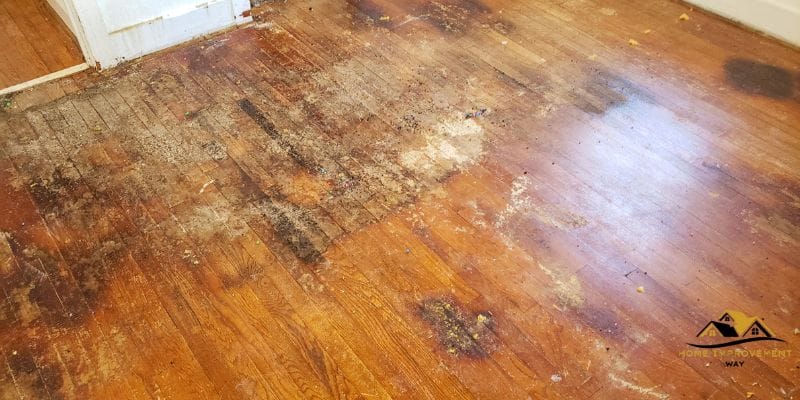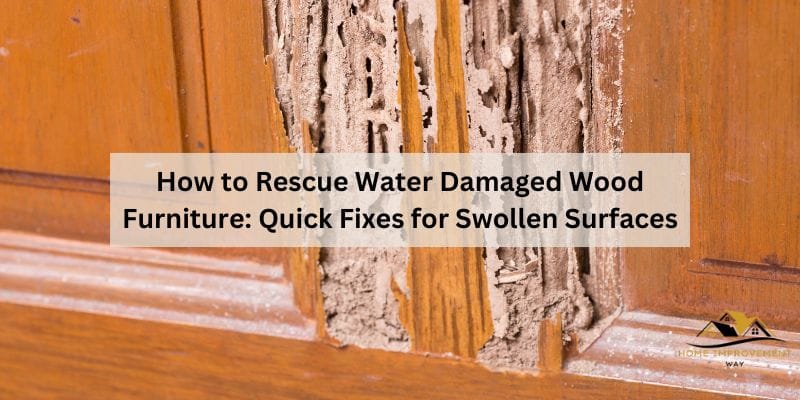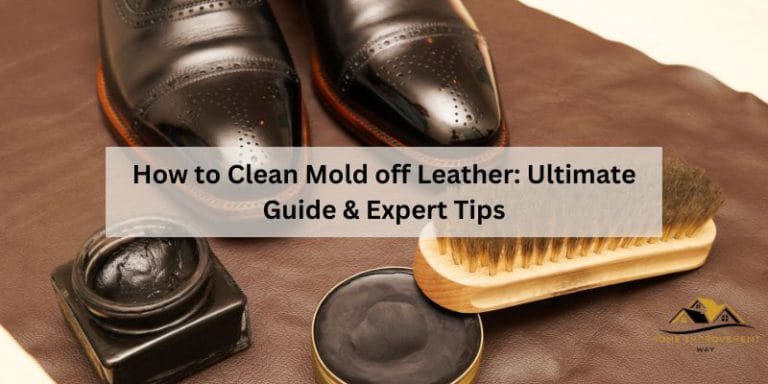How to Rescue Water-Damaged Wood Furniture: Quick Fixes for Swollen Surfaces
To fix water-damaged swollen wood furniture, first, remove any excess moisture and clean the affected area. Then, gently sand the swollen parts and apply a wood conditioner to restore the wood’s original shape and finish.
Water damage can wreak havoc on wood furniture, causing it to swell and become distorted. Whether it’s due to a leak or an accidental spill, addressing this issue promptly is crucial to prevent further damage. We will explore the steps to fix water-damaged swollen wood furniture.
By following these simple yet effective techniques, you can restore your beloved furniture to its former glory. Learn how to remove excess moisture, clean the affected area, gently sand the swollen parts, and apply a wood conditioner to bring back the original shape and finish. So, let’s get started and give your wood furniture a new lease of life.
Assessment And Preparation
Assessment and preparation are key when it comes to fixing water-damaged swollen wood furniture. Follow these steps to assess the damage, remove water, dry the wood, and restore its original condition.
When water damages your beloved wooden furniture, taking immediate action is crucial to prevent further harm. Properly assessing the extent of the water damage and preparing your furniture for restoration are the initial steps toward successful recovery. Understanding how to inspect the damage, remove moisture, and handle any stuck components ensures a thorough restoration process.
Inspecting The Extent Of Water Damage
To begin assessing the water damage, carefully examine the affected furniture. Look for signs of discoloration, warping, or swelling, which are clear indications of water infiltration. Gently touch the wooden surfaces to identify any soft spots or areas that have become mushy. These are the areas that require immediate attention.
After identifying the damaged areas, utilize a flashlight or a magnifying glass to thoroughly inspect the furniture’s crevices and joints. Check for mold growth or any foul odors, as these are signs of prolonged moisture exposure. Make a note of all the damaged components that need special care during the restoration process.

Removing Any Remaining Moisture
Moisture retention within the wood can lead to further damage and the growth of mold and mildew. Begin the moisture removal process by wiping the furniture’s surface with a dry cloth or sponge. Ensure the cloth or sponge is clean and free from any chemicals or abrasive substances.
Inspect the furniture’s underside and hidden areas for residual moisture. If there are any visible puddles or pools of water, carefully blot them with an absorbent cloth until the moisture is fully absorbed. If necessary, use a handheld fan or dehumidifier to aid in the drying process. Proper ventilation is vital to prevent the accumulation of excess moisture.
Disassembling Or Easing Stuck Components
Water damage can cause wooden furniture components to become stuck or difficult to move. If there are drawers or doors that are stuck, avoid applying excessive force as it may worsen the damage. Instead, try using a hairdryer on low heat to gently warm the affected areas. This can help to loosen the stuck components.
In some cases, it may be necessary to disassemble the furniture to properly restore the damaged parts. Carefully remove screws, nails, or any other fasteners that hold the components together. Take note of the order in which the pieces are disassembled for easier reassembly later.
Key Points to Remember:
- Thoroughly inspect for visible signs of water damage, such as discoloration, warping, and swelling.
- Check for mold growth and foul odors, which indicate prolonged moisture exposure.
- Remove moisture by wiping the surfaces and utilizing absorbent materials.
- Aid in drying with a fan or dehumidifier and ensure proper ventilation.
- Use a hairdryer on low heat to ease stuck components before resorting to disassembly.
- Take notes or pictures of the disassembly process for easier reassembly later.
With a thorough assessment of the water damage and proper preparation, you are now ready to move on to the next steps of restoring your beloved wooden furniture. Stay tuned for the upcoming section on how to repair and refinish the damaged areas.
Quick Fixes For Swollen Surfaces
Dealing with water-damaged and swollen wood furniture can be quite a hassle. However, there are some quick fixes that you can try to restore the swollen surfaces. In this section, we will explore different methods to address minor and deep swelling in wood furniture. Whether you have minor swelling or deep swelling, these quick fixes will help you bring your furniture back to its original condition.
Sanding And Smoothing The Swollen Areas
If you’re dealing with minor swelling on the surface of your wood furniture, sanding and smoothing the affected areas can be an effective solution. Start by gently sanding the swollen areas, making sure to remove any rough or raised edges. Use sandpaper with a fine grit, such as 120 or 150, to avoid damaging the wood further. Once the surface is smooth, wipe away any dust or debris with a clean, dry cloth.
Using A Hairdryer Or Dryer Sheets For Minor Swelling
For minor swelling in wood furniture, you can also try using a hairdryer or dryer sheets to reduce the swelling. If the wood has absorbed excess moisture, using a hairdryer on a low setting and moving it in a circular motion over the affected areas can help to dry out the wood and reduce swelling. Alternatively, placing dryer sheets between the swollen surface and a weighted object can also absorb moisture and minimize swelling.

Applying Moisture To Reduce Swelling
In some cases, applying moisture to the swollen wood furniture can actually help to reduce swelling. This may seem counterintuitive, but by evenly moistening the entire surface of the wood, you can encourage it to expand uniformly, which can help to alleviate swelling. Use a clean, damp cloth to lightly dab the swollen areas and allow the wood to absorb the moisture. After applying moisture, make sure to dry the surface thoroughly with a clean, dry cloth.
Using Wood Hardener Or Epoxy Resin For Deep Swelling
If you’re dealing with deep swelling in the wood furniture, more drastic measures may be required. Wood hardener or epoxy resin can be used to fill in the swollen areas and restore the integrity of the wood. Start by cleaning the surface and removing any loose or damaged wood. Then, apply the wood hardener or epoxy resin according to the manufacturer’s instructions. Allow it to dry and harden completely before sanding and refinishing the surface to match the rest of the furniture.
Conclusion
Fixing water-damaged swollen wood furniture requires careful assessment, gentle cleaning, and proper restoration techniques. By promptly addressing the issue, you can prevent further damage and restore the beauty of your furniture. Remember to assess the extent of the damage, remove excess moisture, and allow the wood to dry thoroughly before employing appropriate restoration methods.
With patience and the right approach, you can successfully revive your water-damaged furniture and extend its lifespan.







